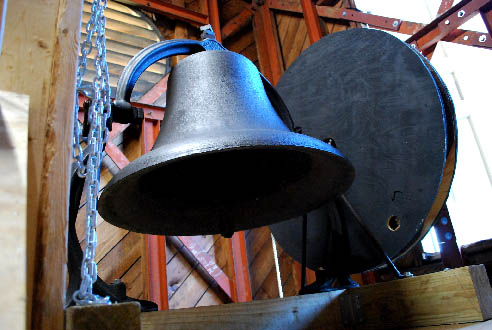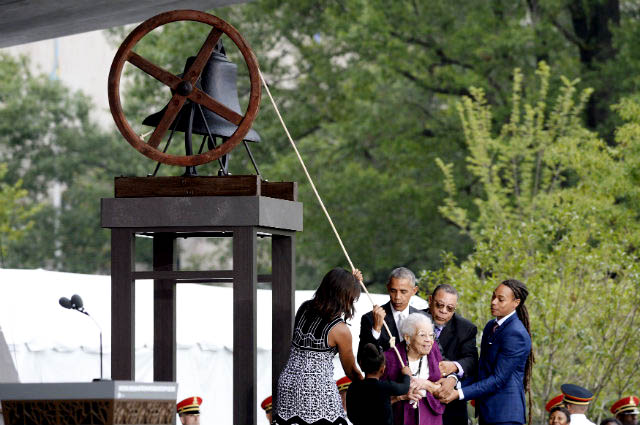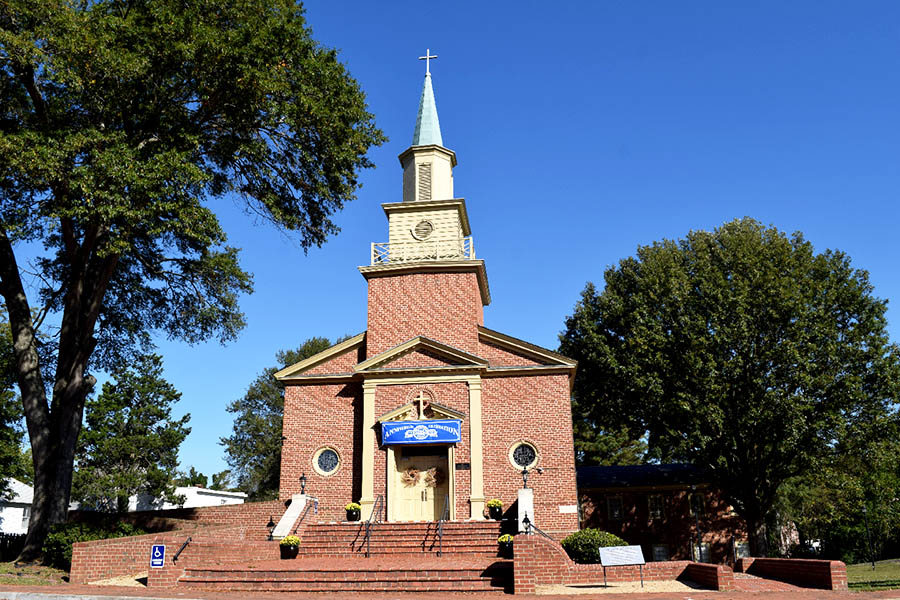The history of First Baptist Church in Williamsburg, Va. took me by surprise. As often happens in our lives, you get up in the morning, unaware that a call on that particular day, at that particular time, will stir your passion, interest, curiosity. You end up discovering a story that will make you a better person—a richer one. You could call it synchronicity.
The call on that day was from Ms. Connie Matthews Harshaw, President of the Let Freedom Ring Foundation, a nonprofit group whose mission is, I learned that day, “to preserve and protect the First Baptist Church historic building, landscape, freedom bell and other artifacts of historical significance.” The call was the first one of several which told me an amazing story.
The Story of the First Baptist Church
In 1776, a group of enslaved and free Blacks, led by a free Black itinerant preacher, the Rev. Moses, built a brush arbor to provide some shelter for their worship together. However, this site was not convenient for everyone, so they decided to move a couple of miles away to a better site. As Dr. Tommy L. Bogger reports in his Since 1776: The History of First Baptist Church, “Shortly afterward, Mr. Jesse F. Cole heard the fervent prayers and soul stirring songs of these people and was so moved that he decided to give them a better meeting place. Thus, he gave them the use of his carriage house in Williamsburg, just fifty yards from his home.” Jesse F. Cole was a slaveholder.
Later, moved by the devotion and commitment of the church’s early adherents, Cole gave land and a building to them, “to have and to hold as long as it was used for a church by the congregation.” After the death of the Reverend Moses in 1791, Gowan Pamphlet (1748-1809), an enslaved man, was called to guide the congregation, and under his leadership the congregation gained admission to the Dover Baptist Association in 1793.
By 1830 the Baptist Church of Christ in Williamsburg, then led by Reverend John Dipper, had about 600 members. However, following Nat Turner’s Rebellion a new statute decreed that Black persons could not congregate without the presence of at least one white person. Because of this, Reverend Dipper could not lead his flock. Church services were suspended for a year, and hard times fell on Dipper, who was forced to leave Virginia.

The bell manufactured by Blymyer Norton & Co. in the 1880s.
Photo: Colonial Williamsburg Foundation
In 1856 the congregation—then called the African Baptist Church—dedicated a new brick church on Nassau Street and about thirty years later, the women of the church raised money to purchase a bell to call people to service. Their message: This is a bell that says we will meet again!
During the Civil War, the Confederate army confiscated the church to serve as a hospital for the wounded soldiers of the Battle of Williamsburg. In 1863, the church officially became the First Baptist Church of Williamsburg.
In 1954, as Colonial Williamsburg continued to grow and evolve, the Williamsburg Holding Company bought the historic property on Nassau Street for $130,000, and the congregation moved to Scotland Street where a new church was built in 1956. The edifice, designed by Bernard Spiegel, is an elegant building in the Colonial Revival style, which was listed on the National Register of Historic Places on June 6, 2017.
Today, First Baptist Church is still a vibrant congregation led by Rev. Dr. Reginald F. Davis.
Now, back to the bell.
The bell, manufactured by Blymyer Norton & Co. in Cincinnati, had been purchased in the 1880s, but it had not rung in years. With the assistance of the Colonial Williamsburg Foundation, the church restored the bell in 2015. In a moving ceremony, the descendants of Sally Hemings and Thomas Jefferson were the first to ring the bell for freedom, justice and equality just outside the sanctuary as a symbol to an audience of thousands.
Later, in 2016 the 500-hundred-pound bell was brought to Washington D.C., where it rang at the dedication of the Smithsonian’s newest museum: the National Museum of African American History and Culture. President Obama and Michelle Obama rang the bell at the dedication of the new museum, and the pastor of First Baptist Church, Dr. Davis, commemorated the day with this statement: “That it will ring on such a day in the presence of our nation’s first African American president, is a glorious advent that we could not have shared in our prayers or imagined in our wildest dreams.”
The bell, solemn and ancient, was joyous witness of a very, very special day.

President Obama and Michelle Obama joined representatives from First Baptist to ring the bell at the dedication of the new National Museum of African American History and Culture in Washington, D.C.
Photo: Getty Images
Partners often advises congregations to set up a separate nonprofit organization to encourage new friends and allies, and explore wider avenues of philanthropy in their efforts to preserve and restore their historic building. First Baptist Church had the wisdom to do so, and on June 27, 2018, the Commonwealth of Virginia’s State Corporation Commission issued the certificate of incorporation for the Let Freedom Ring Foundation. The Foundation received its first $10,000 donation from the National Council of Negro Women.
I have spoken several times with Ms. Harshaw, and admired her warmth and wisdom, her grace and determination. The foundation is very active—engaging the community and seeking out strategic partnerships and funding opportunities.
Now, in collaboration with the Colonial Williamsburg Foundation and First Baptist Church, the Foundation is taking on the Nassau Street Archeological Project— uncovering the original site of First Baptist Church on Nassau Street dating back to at least 1856. The goal of the project is to bring life back to that site so that its history can be shown to visitors via interpretative programs. The Foundation has already raised close to $450,000 from supporters to fund the first and second phases of this remarkable project.

